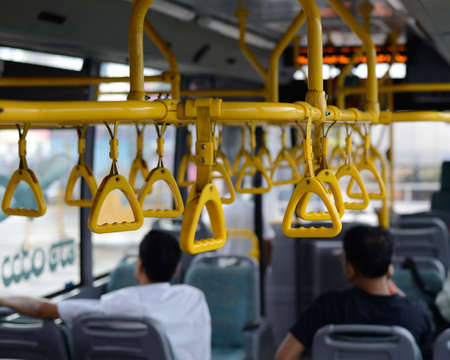1. Understanding Pet-Friendly Facilities and Regulations
India is a vibrant country where millions travel daily by train and bus, often accompanied by their beloved pets. If you are planning to travel with your furry friend, it’s crucial to understand the specific regulations and facilities available at Indian Railway platforms and bus stands. Indian Railways, one of the world’s largest railway networks, has clear guidelines for pet travel. Pets such as dogs, cats, and birds are allowed on trains but must comply with certain rules. For First Class AC compartments, small pets can travel with their owners after obtaining prior permission from the Station Master. However, in sleeper class or second class coaches, pets are generally not permitted unless they are kept in luggage vans with proper arrangements. Required paperwork typically includes a valid health certificate from a registered veterinarian and up-to-date vaccination records. State transport buses across India have varying policies depending on the state and the type of bus service—some allow pets in carriers on non-AC buses, while others may prohibit them entirely due to passenger safety concerns. It’s always best to check with the local transport office or bus operator before planning your journey. Knowing these rules will help you avoid last-minute hassles and ensure a safe and comfortable trip for both you and your pet.
2. Preparing Your Pet for Public Travel
Travelling with your furry companion in India requires thoughtful preparation, especially when navigating crowded railway platforms and busy bus stands. Ensuring your pet’s safety and well-being starts well before the journey. Here are essential tips tailored for Indian conditions:
Vaccinations & Health Checks
Before you embark on your trip, visit a qualified veterinarian for a thorough health check-up. Make sure all core vaccinations, including rabies (mandatory in India), parvovirus, and distemper, are up to date. Ask your vet about preventive treatments for ticks, fleas, and other common parasites prevalent in India’s climate.
Essential Vaccination Checklist for Indian Pets
| Vaccine | Purpose | Recommended Frequency |
|---|---|---|
| Rabies | Legal requirement & prevents fatal disease | Annually or as advised by vet |
| Parvovirus/Distemper Combo | Protects against common infectious diseases | Every 1-3 years |
| Leptospirosis | Prevents waterborne bacterial infection common in monsoon | Annually |
| Tick & Flea Preventive | Avoids infestations, especially in public spaces | Monthly (spot-on/tablets) |
Packing Essentials for Indian Climate & Local Needs
Packing appropriately ensures both comfort and safety for your pet amidst India’s diverse weather and bustling environments. Use the table below as a quick reference guide:
Packing List for Pet Travel in India
| Item | Purpose/Tip for India |
|---|---|
| Water Bottle & Bowl | Avoid dehydration; carry filtered/bottled water due to varying water quality at stations. |
| Pet Food & Treats | Stick to familiar brands; sudden diet changes may upset stomachs. |
| Leash & Collar/Harness with ID Tag | Crowded places require sturdy control and identification. |
| Muzzle (for dogs) | Required by some railway authorities; helps avoid conflicts in busy areas. |
| Bedding or Mat | Keeps your pet comfortable and insulated from hot/cold ground surfaces. |
| Poo Bags & Wet Wipes | Maintain hygiene at public places; always clean up after your pet. |
| Towel & Raincoat (seasonal) | Essential during monsoon; helps keep pets dry and clean. |
| Sunscreen (pet-safe) | If travelling during peak summer or to sunny destinations. |
Cultural Tip:
If you’re using public transport like Indian Railways or state-run buses, inform the staff beforehand about your pet. Some routes require advance booking or special compartments for animals. Always check local guidelines to avoid last-minute hassles.
A well-prepared pet is not only safer but will also be less stressed during travel. These steps ensure a smooth experience for both you and your furry friend while exploring the vibrant landscapes of India.

3. Safe Handling of Pets at Crowded Platforms and Stands
When travelling through Indian railway platforms and bus stands, especially during peak hours, maintaining your pet’s safety is crucial. These bustling environments can be overwhelming for animals due to high foot traffic, loud noises, and unpredictable movements. Here are some best practices for safe handling:
Leashing: The First Line of Safety
Always use a sturdy leash when walking your pet in crowded places like Chhatrapati Shivaji Maharaj Terminus or major ISBTs. Opt for short leashes that offer better control, especially during rush hour when the crowd surges. Retractable leashes should be avoided as they may not provide immediate restraint if your pet gets startled by sudden noises or movement.
Crate Use: Secure and Comfortable Travel
If your pet is small or tends to get anxious, using a well-ventilated crate is highly recommended. In India’s busy platforms, a crate prevents accidental escapes and shields your pet from being stepped on or injured amidst the crowd. Make sure the crate is labelled with your contact details and lined with familiar bedding to keep your pet calm.
Constant Supervision Is Key
Never leave your pet unattended at any public place, even for a few minutes. Supervision is especially important during the morning and evening rushes typical in cities like Mumbai, Delhi, or Bengaluru. Assign one family member to focus solely on the pet while others manage luggage or tickets.
Local Tips for Indian Travellers
During festival seasons or holidays when crowds swell further, consider adjusting your travel time to non-peak hours if possible. Always carry drinking water for your pet, as access may be limited in public stations. Remember, even friendly street dogs or monkeys around some stations can distract or scare your pet—keep an eye out and maintain a safe distance.
By following these best practices tailored for Indian railway platforms and bus stands, you ensure not just your own peace of mind but also the well-being of your beloved companion during every journey.
4. Hygiene and Comfort for Your Furry Friends
Ensuring your pet’s hygiene and comfort is crucial while waiting at railway platforms or bus stands in India, where the weather can be hot, humid, or dusty. Here are essential tips to keep your furry companion clean, hydrated, and stress-free during your journey.
Hydration: Beat the Indian Heat
Indian summers can be harsh, especially in crowded transit areas. Always carry a portable water bowl and fresh water for your pet. Encourage them to drink small amounts frequently. Avoid sharing tap water from public stations as it may not be safe for pets.
| Weather Condition | Hydration Advice |
|---|---|
| Hot & Humid (April–June) | Offer cool water every 30 mins; avoid direct sunlight |
| Monsoon (July–September) | Keep water covered to prevent contamination |
| Winter (December–February) | Room temperature water; avoid very cold drinks |
Cleanliness: Maintaining Pet Hygiene in Public Spaces
Railway and bus stations may not always have pet-friendly amenities like designated toilet spots or waste bins. Always carry disposable waste bags, tissues, and a small towel to clean up after your pet. Use pet-safe wet wipes for quick paw or fur cleaning if they come in contact with dirt or spills. Dispose of waste responsibly to keep public areas clean.
Comfort: Keeping Pets Calm Amidst the Hustle
Crowded stations with loud noises can make pets anxious. Carry their favourite toy or blanket from home—familiar scents help soothe them. Consider using a breathable carrier or a well-ventilated crate for small pets. For larger dogs, a leash with a gentle harness ensures safety without discomfort.
Quick Checklist for Pet Comfort at Stations:
- Water bottle & bowl
- Waste bags & cleaning wipes
- Treats for positive reinforcement
- Toy/blanket with familiar scent
- Breezy carrier or harness leash
- Paw balm (for hot surfaces)
Pro Tip:
If you notice signs of heat stress (excessive panting, drooling, restlessness), move your pet to a shaded spot immediately and offer water. In case of severe symptoms, seek help from nearby station staff—they may guide you to the closest veterinary assistance available in larger Indian cities.
5. Dealing with Stray Animals and Local Wildlife
Indian railway platforms and bus stands are often lively spaces, not just with people, but also with stray animals like dogs, cows, and urban wildlife such as monkeys. These animals may appear harmless or even friendly, but they can pose risks to your pets in unfamiliar environments.
Keep Your Pet Leashed and Close
Always keep your pet on a sturdy leash or inside a secure carrier. Stray dogs are common at stations and might approach out of curiosity or territorial instincts. A sudden encounter can startle your pet or lead to aggressive interactions. Maintaining control over your pet helps prevent unwanted attention from strays and reduces the risk of accidents.
Watch Out for Monkeys and Other Urban Wildlife
Monkeys are frequently found around railway platforms in several Indian cities, especially in North India. These clever creatures can be attracted by food or shiny objects. Never offer food to monkeys or allow your pet to carry toys or snacks visibly. If you spot monkeys nearby, move away calmly without making direct eye contact.
Avoid Feeding Strays at Stations
While it is common in Indian culture to show kindness to stray animals, feeding them at crowded locations can attract more animals and create a stressful situation for your pet. It’s best to save these acts of kindness for another time and focus on your own pet’s safety during travel.
Vaccination and Health Precautions
Before traveling, ensure your pet’s vaccinations—especially against rabies—are up to date. In case of any scratch or bite from a stray animal, seek immediate medical attention for both yourself and your pet at the nearest clinic.
Stay Calm and Move Away Safely
If approached by a stray animal or wildlife, remain calm and do not panic. Slowly distance yourself while keeping your pet close by your side. Avoid running, as this may provoke a chase response from dogs or monkeys.
By staying alert and prepared, you can safeguard your pet from unexpected encounters with local wildlife at India’s bustling travel hubs, ensuring a safer journey for both you and your furry companion.
6. Emergency Contacts and First Aid Resources
When travelling with your pets across Indias busy railway stations and bus stands, knowing whom to call in an emergency can make all the difference. Here’s a guide to essential helpline numbers, veterinary services, and first aid tips for pet safety at major travel hubs.
Important Helpline Numbers
- Animal Ambulance (Pashu Chikitsa Ambulance): Dial 1962 (available in select states like Delhi, Karnataka, Tamil Nadu)
- Indian Railways Helpline: 139 (for general enquiries and emergencies at railway platforms)
- All India Animal Welfare Board: +91-11-23719293
- Blue Cross of India Emergency: +91-44-22354959 (Chennai region)
- PETA India Animal Helpline: +91-9820122602
Veterinary Services at Major Travel Hubs
- New Delhi Railway Station Area: Sanjay Gandhi Animal Care Centre (+91-11-25448062), Friendicoes SECA (+91-11-24314787)
- Mumbai CST & Bus Terminals: Bombay SPCA Hospital (+91-22-24137518), Welfare of Stray Dogs (+91-22-64222838)
- Bengaluru Majestic Railway/Bus Stand: CUPA Animal Hospital (+91-80-22947301), Karuna Animal Shelter (+91-80-23545523)
- Kolkata Howrah/Sealdah Stations: People For Animals Kolkata (+91-33-24287700)
First Aid Advice for Pets During Travel
- Heatstroke: Move your pet to a shaded area immediately. Offer cool water and dampen their fur with a wet cloth. Avoid ice-cold water as it may cause shock.
- Paw Injuries: Clean wounds gently with clean water or saline solution; cover with a soft bandage until you reach a vet.
- Nausea or Anxiety: Keep your pet calm by talking softly. If possible, give them a quiet corner away from crowds. Carry prescribed anti-nausea medicine if your vet has recommended any.
- Bites or Stings: Remove stingers carefully, wash the area, and apply a cold compress. Seek veterinary help as soon as possible.
Quick Tips for Pet Owners at Indian Stations & Stands
- Always carry a basic pet first aid kit with bandages, antiseptic wipes, cotton, and any regular medication your pet needs.
- If unsure about your pet’s health or if there is an emergency, contact the nearest station manager or security personnel for assistance in locating veterinary help.
Your Pet’s Safety Is Paramount
A little preparation goes a long way—keep these contacts handy, stay alert to your pet’s needs, and enjoy a safe journey across India’s vibrant travel network!

